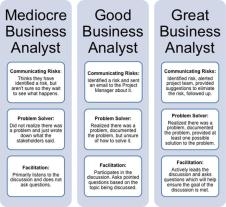How do you format a proposal?
Formatting a proposal professionally is crucial to present your ideas effectively. Here's a guide to formatting a proposal:
Title Page:
- Include the title of the proposal, your name or organization's name, the date, and any other relevant information like project or client's name.
Table of Contents:
- For longer proposals, include a table of contents with section titles and page numbers for easy navigation.
Executive Summary:
- Provide a concise overview of the proposal, highlighting key points, objectives, and benefits. It's usually placed at the beginning to give readers a snapshot of the proposal.
Introduction:
- Introduce the proposal, setting the context for what follows. Briefly discuss the problem or opportunity the proposal addresses.
Body:
- Divide the body into clear sections with headings and subheadings.
- Present the proposal's details logically, discussing objectives, methodologies, timelines, resources, and any other relevant information.
- Use bullet points, lists, and tables for clarity and to break down complex information.
Visual Aids:
- Include charts, graphs, diagrams, or images if they enhance understanding or illustrate key points.
- Ensure visual elements are clear, relevant, and properly labeled.
Conclusion:
- Summarize the main points and reiterate the proposal's benefits and feasibility.
- Emphasize the positive outcomes or impact of implementing the proposal.
Appendix (if needed):
- Include supplementary materials such as additional data, references, detailed charts, or supporting documents here.
Formatting Guidelines:
- Use a professional font like Arial, Times New Roman, or Calibri in a readable size (usually 11 or 12 points).
- Maintain consistent formatting throughout the proposal, including font style, size, and spacing.
- Use headings, subheadings, and bullet points for organization and readability.
- Ensure proper margins and alignment for a neat appearance.
Review and Edit:
- Proofread the proposal carefully for grammar, spelling, and formatting errors before finalizing it.
Remember, a well-structured and professionally formatted proposal not only makes it easier for readers to comprehend your ideas but also reflects positively on your professionalism and attention to detail. Tailor the formatting to suit the preferences of your audience or the requirements of the organization you're submitting the proposal to.
What are the essential formatting guidelines for drafting a proposal document?
Essential Formatting Guidelines for Drafting a Proposal Document:
A well-formatted proposal document enhances its professionalism, readability, and impact. Here are some essential guidelines to follow:
General Formatting:
- Font: Use a standard, professional font like Arial, Times New Roman, or Calibri. Aim for font size 12pt for body text and slightly larger sizes for headings and subheadings.
- Margins: Use standard margins of 1 inch on all sides for a clean and balanced layout.
- Line Spacing: Use single line spacing for body text and 1.5 line spacing for headings and subheadings.
- Paragraph Indentation: Indent the first line of each paragraph by 0.5 inches.
- Tables and Figures: Use tables and figures sparingly and ensure they are clear, concise, and well-labeled with titles and captions.
- Pagination: Number all pages consecutively starting with the introduction.
- File format: Save your proposal as a PDF document for consistent formatting and easy sharing.
Content Organization:
- Cover Page: Include the proposal title, your name and organization, date, and recipient information.
- Table of Contents: List all sections and their corresponding page numbers for easy navigation.
- Executive Summary: Briefly summarize the key points of your proposal, including the problem you are addressing, your proposed solution, and the benefits you offer.
- Problem Statement: Clearly define the problem or opportunity that your proposal addresses.
- Proposed Solution: Describe your proposed solution in detail, including the methodology, timeline, and deliverables.
- Qualifications and Experience: Highlight your relevant skills, experience, and team members' expertise.
- Timeline and Budget: Outline the proposed timeline for project completion and the associated budget breakdown.
- Benefits and Value Proposition: Clearly explain how your solution will benefit the recipient and the value it will deliver.
- Appendices: Include any supporting documents, such as resumes, references, or detailed technical specifications.
Overall Design and Layout:
- Consistency: Use consistent fonts, margins, line spacing, and formatting throughout the document.
- Headings and Subheadings: Use clear and concise headings and subheadings to organize your content and improve readability.
- White Space: Leave sufficient white space between paragraphs, sections, and around tables and figures to enhance visual clarity.
- Visual Elements: Consider using visuals like charts, graphs, and diagrams to enhance your content and communicate complex information effectively.
- Proofreading and Editing: Carefully proofread your proposal for any grammatical errors, typos, or formatting inconsistencies.
Additional Tips:
- Tailor your formatting to the specific requirements of the proposal request.
- Use a professional and formal tone throughout the document.
- Keep your proposal concise and focused on the most important information.
- Get feedback on your proposal from colleagues or mentors before submitting it.
By following these essential formatting guidelines and paying attention to the overall design and layout of your proposal document, you can significantly improve its professionalism and increase your chances of success.












